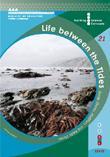You are here:
- Home »
- Teaching resources »
- Building Science Concepts »
- Titles and concept overviews »
- Life between the Tides

Book 21: Life between the Tides: Sandy Shores, Mudflats, and Rocky Shores
Synopsis
Most children in New Zealand have experience of, or access to, some form of coastal beach: rocky shores, sandy and shingle shores, mudflats, lagoons, or estuaries. These places offer a wide variety of microhabitats, where different communities of living things can get the food and shelter they need. Studying this environment gives children opportunities to explore concepts of:
- the variety and interdependence of living things
- the effects of change, both short- and long-term, on an environment
- the relationship between living and non-living elements in an ecosystem.
Children often overlook the role of small species in a community, for example, the plants and tiny insects living there, and focus instead on larger animals such as birds and fish. This topic provides an opportunity to draw their attention to the variety of species in a beach community and the importance and interdependence of all the members of that community.
The topic is also a context for incorporating an awareness of values associated with kai moana. Beaches are places of great importance to Māori as sources of food, and there are various protocols through which respect is shown for an environment that, through these sources, helps to sustain human life. At this level, these will have most relevance to behaviour during beach visits by the class.
Concept overview
Use the concept overview, which is also on the inside front cover of the book, as a reference for the concepts that relate to Life between the Tides: Sandy Shores, Mudflats, and Rocky Shores.
![]() Read the concept overview
(PDF 40 KB)
Read the concept overview
(PDF 40 KB)
Links with other titles in the series
The concepts introduced in this book are developed further in Tidal Communities, the companion book for levels 3 and 4 on this topic.
- Book 22. Tidal Communities (L3-4, Living World)
Assessment resources
Search the science section of the Assessment Resource Banks (ARB) website to find resources that assess the 'big idea' learning outcomes referred to in the concept overview for this title.

